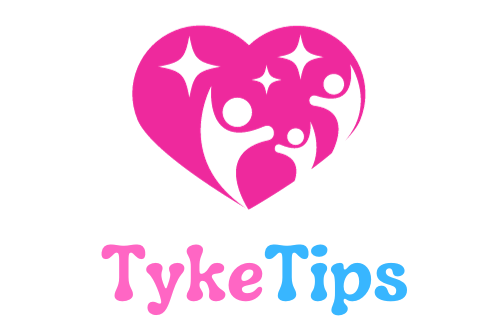If you want to help your child learn to walk in a natural way, “The Cruise Method” by Emma Hubbard is the perfect solution. This video outlines a simple 4-step system that focuses on key techniques like the “Lean & Reach” and the “Sideways Shuffle” to build essential skills for walking. You’ll also learn how to create a supportive environment for your child to take those first independent steps with confidence.
The best part is that you don’t need any expensive equipment – just your existing furniture and some strategic toy placement. By recognizing your child’s readiness signals and following the steps outlined in this video, you’ll be on your way to helping your child walk in no time. Remember, always consult with a healthcare professional if you have any concerns about your child’s development.
Understanding Child Development Milestones
Child development milestones are crucial markers in your child’s growth and development. These milestones are a way to track your child’s progress and ensure they are reaching important goals at the right time. It is essential to monitor these milestones to identify any delays or concerns early on and address them promptly. From crawling to walking, each milestone plays a vital role in shaping your child’s physical, emotional, and cognitive development.
Importance of Development Milestones
Development milestones serve as a roadmap for your child’s growth. They provide insight into your child’s abilities and help you understand what to expect at various stages of development. Achieving these milestones contributes to your child’s overall well-being and sets the foundation for future learning and development. By recognizing and celebrating these milestones, you can support and encourage your child’s progress while fostering a positive environment for growth.
Signs That Your Child is Ready to Walk
One of the most significant milestones in a child’s development is learning to walk. There are several signs that indicate your child is ready to take their first steps. These signs include standing with support, cruising along furniture, and showing an interest in moving independently. Observing these cues can help you determine when your child is physically and emotionally prepared to start walking. Encouraging and supporting your child during this transition period is essential for their confidence and success.
Age-Appropriate Expectations
It is essential to understand that every child develops at their own pace. While there are general guidelines for when children typically reach certain milestones, it is equally important to recognize that every child is unique. Setting age-appropriate expectations involves acknowledging and respecting your child’s individuality and allowing them to progress at their own speed. By taking into account your child’s unique abilities and needs, you can provide the necessary support and encouragement for a successful developmental journey.
The Cruise Method Overview
The Cruise Method is a simple and effective 4-step system designed to support and guide your child through the process of learning to walk. Developed by child development experts, this method focuses on creating a safe and encouraging environment for children to build confidence and develop essential walking skills.
Explanation of The Cruise Method
The Cruise Method emphasizes the natural progression of walking skills and aims to facilitate your child’s journey towards independent walking. By incorporating play-based techniques and encouraging exploration, this method provides a fun and engaging approach to learning this crucial milestone.
Benefits of Using The Cruise Method
Utilizing The Cruise Method offers numerous advantages for both you and your child. By following this method, you can help your child develop balance, coordination, and muscle strength while promoting independence and self-confidence. The structured approach of The Cruise Method ensures that your child receives consistent support and guidance as they navigate the process of learning to walk.
Comparison to Other Walking Methods
The Cruise Method stands out from traditional walking methods by focusing on a holistic approach to child development. Unlike rigid or overly structured methods, The Cruise Method encourages flexibility and adaptability to suit your child’s individual needs. By prioritizing playfulness and exploration, this method fosters a positive and nurturing environment for children to learn and grow.
Step 1: The Lean & Reach Technique
The Lean & Reach Technique is the first step in The Cruise Method and lays the foundation for developing weight-shifting skills necessary for walking. This technique involves encouraging your child to shift their weight from one leg to the other while reaching for support.
Description of the Technique
The Lean & Reach Technique involves gently guiding your child to lean towards one side while reaching out for your hand or a nearby support surface. This movement helps your child practice shifting their weight and gaining a sense of balance and control.
How it Helps in Building Weight-Shifting Skills
By engaging in the Lean & Reach Technique, your child strengthens the muscles needed for walking and improves their ability to support themselves independently. This step aids in developing coordination and spatial awareness while building confidence in weight-bearing activities.
Tools Needed for Implementing this Step
To implement the Lean & Reach Technique, you will need a safe and spacious area for your child to move freely. Additionally, having supportive furniture or objects within reach can facilitate your child’s practice of shifting their weight and reaching for stability.

Step 2: The Sideways Shuffle
The Sideways Shuffle is the second step in The Cruise Method and focuses on building walking confidence through lateral movement. This technique encourages your child to explore different directions and gain a sense of control over their movements.
Detailing the Sideways Shuffle Technique
During the Sideways Shuffle, your child will practice moving sideways while holding onto support or walking along a stable surface. This movement pattern helps your child develop lateral stability and coordination, preparing them for more complex walking skills.
Importance of this Step in Building Walking Confidence
The Sideways Shuffle plays a critical role in enhancing your child’s balance and spatial awareness. By encouraging side-to-side movement, this technique boosts your child’s confidence in exploring different directions and adapting to various walking surfaces.
Demonstration of the Technique
To demonstrate the Sideways Shuffle, encourage your child to take small steps sideways while holding onto furniture or your hand for support. Demonstrate the movement pattern and provide positive reinforcement to motivate your child to practice and build their walking skills.
Step 3: The Furniture Bridge
The Furniture Bridge is the third step in The Cruise Method and focuses on developing walking stability and control. This step involves using furniture as a bridge to support your child’s walking progress and encourage independent movement.
Explanation of The Furniture Bridge Step
During the Furniture Bridge step, your child will utilize supportive furniture or objects to walk between two points. This practice allows your child to engage in purposeful walking while gradually reducing the need for external support.
How it Aids in Developing Walking Stability
By engaging in the Furniture Bridge, your child builds stability, strength, and confidence in their walking abilities. This step encourages your child to take more independent steps and gradually transition from relying on external support to walking unassisted.
Precautions to Take During this Step
While practicing the Furniture Bridge, it is essential to ensure a safe environment free of hazards or obstacles that could impede your child’s movement. Supervise your child closely and provide gentle guidance and support as needed to prevent falls or accidents.
Step 4: The Confidence Gap
The Confidence Gap is the final step in The Cruise Method and focuses on encouraging your child to take independent steps without constant support. This step plays a crucial role in building your child’s confidence and promoting autonomy in walking.
Describing The Confidence Gap Technique
During The Confidence Gap, your child will have opportunities to take independent steps between short distances without relying on external support. This step encourages your child to trust their abilities and build confidence in their walking skills.
Role of this Step in Encouraging Independent Steps
The Confidence Gap technique instills a sense of autonomy and self-assurance in your child, signaling their readiness to walk independently. By creating a supportive yet challenging environment, you can motivate your child to take those crucial first steps towards independent walking.
Real-Life Examples of Children Using The Confidence Gap
Many children who have followed The Cruise Method successfully transition from supported walking to independent steps through The Confidence Gap. By gradually increasing the distance and complexity of walking challenges, children build resilience and persistence in mastering this important milestone.
Creating an Ideal Walking Environment
To support your child’s walking journey, creating an ideal walking environment is essential. By optimizing your home space and incorporating supportive elements, you can create a safe and encouraging atmosphere for your child to practice and refine their walking skills.
Utilizing Existing Furniture for Support
Use existing furniture such as tables, chairs, and sofas as support structures for your child to hold onto and navigate around. Position these items strategically to create a walking path and encourage your child to explore and move independently.
Strategic Toy Placement for Motivation
Place toys and objects of interest at different points along your child’s walking route to motivate them to move and reach for these items. By incorporating play into the walking practice, you can make the experience engaging and enjoyable for your child.
Ensuring a Safe and Encouraging Space for Your Child
Eliminate any potential hazards or obstacles that could pose a risk to your child’s safety while walking. Clear pathways, secure loose items, and provide adequate supervision to create a supportive environment where your child feels safe to explore and learn.
Embracing Individual Progress
Every child progresses at their own pace, and it is essential to embrace and celebrate your child’s individual progress throughout their walking journey. By recognizing and supporting your child’s unique abilities and needs, you can foster a positive and empowering environment for their development.
Allowing Your Child to Progress at Their Own Pace
Avoid comparing your child’s progress to others and instead focus on their individual growth and achievements. Allow your child the time and space to explore and practice walking skills at a pace that is comfortable and natural for them.
Celebrating Small Milestones Along the Way
Acknowledge and celebrate the small victories and incremental progress your child makes in their walking journey. By recognizing their efforts and achievements, you can boost your child’s confidence and motivation to continue learning and improving.
Adjusting the Method Based on Your Child’s Needs
Be flexible and responsive to your child’s changing needs and abilities as they learn to walk. Modify and adapt The Cruise Method techniques to suit your child’s preferences and comfort level, ensuring that they feel supported and encouraged throughout the process.
Fostering Parent-Child Bonding
Engaging with your child during walking practice not only supports their physical development but also strengthens your parent-child bond. By actively participating in your child’s learning journey, you can enhance communication, trust, and shared experiences.
Encouraging Verbal and Non-Verbal Communication
Use verbal cues, praise, and encouragement to communicate with your child during walking practice. Expressing positivity and support through words and gestures can motivate your child and enhance their sense of accomplishment and connection.
Building Trust and Confidence Through the Process
By being present and involved in your child’s walking practice, you can build a sense of trust and security in your relationship. Offering consistent support, guidance, and reassurance can help your child feel confident and empowered as they navigate this significant developmental milestone.
Conclusion
In conclusion, The Cruise Method offers a practical and engaging approach to supporting your child’s journey to walking independence. By following the 4-step system and creating an optimal environment for practice, you can empower your child to develop essential walking skills while fostering confidence and autonomy.
Summarizing the Effectiveness of The Cruise Method
The Cruise Method has proven to be effective in guiding children through the process of learning to walk naturally and confidently. By emphasizing playfulness, exploration, and individual progress, this method promotes a positive and supportive environment for children to thrive and succeed.
Encouraging Parents to Support Their Child’s Walking Journey
As a parent, your role in supporting your child’s walking journey is crucial. By providing encouragement, guidance, and a nurturing environment, you can help your child build confidence, independence, and resilience as they navigate this significant milestone.
Emphasizing the Importance of Patience and Consistency
Patience and consistency are key components of supporting your child’s development and progress in learning to walk. By remaining patient, positive, and consistent in your approach, you can create a conducive environment for your child to learn and grow at their own pace.

